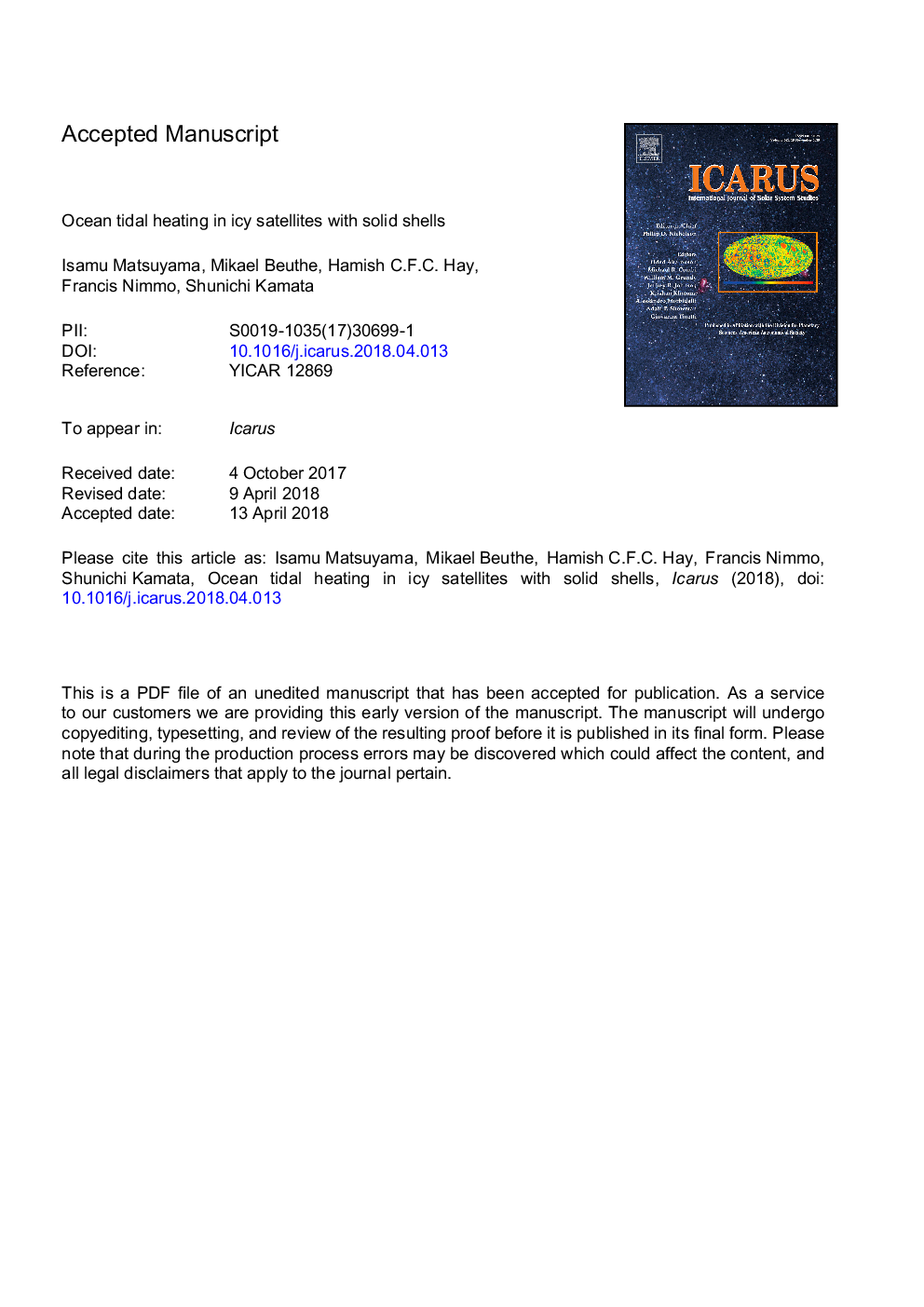| Article ID | Journal | Published Year | Pages | File Type |
|---|---|---|---|---|
| 8133930 | Icarus | 2018 | 55 Pages |
Abstract
As a long-term energy source, tidal heating in subsurface oceans of icy satellites can influence their thermal, rotational, and orbital evolution, and the sustainability of oceans. We present a new theoretical treatment for tidal heating in thin subsurface oceans with overlying incompressible elastic shells of arbitrary thickness. The stabilizing effect of an overlying shell damps ocean tides, reducing tidal heating. This effect is more pronounced on Enceladus than on Europa because the effective rigidity on a small body like Enceladus is larger. For the range of likely shell and ocean thicknesses of Enceladus and Europa, the thin shell approximation of Beuthe (2016) is generally accurate to less than about 4%. Explaining Enceladus' endogenic power radiated from the south polar terrain by ocean tidal heating requires ocean and shell thicknesses that are significantly smaller than the values inferred from gravity and topography constraints. The time-averaged surface distribution of ocean tidal heating is distinct from that due to dissipation in the solid shell, with higher dissipation near the equator and poles for eccentricity and obliquity forcing, respectively. This can lead to unique horizontal shell thickness variations if the shell is conductive. The surface displacement driven by eccentricity and obliquity forcing can have a phase lag relative to the forcing tidal potential due to the delayed ocean response. For Europa and Enceladus, eccentricity forcing generally produces greater tidal amplitudes due to the large eccentricity values relative to the obliquity values. Despite the small obliquity values, obliquity forcing generally produces larger phase lags due to the generation of Rossby-Haurwitz waves. If Europa's shell and ocean are, respectively, 10 and 100â¯km thick, the tide amplitude and phase lag are 26.5â¯m and â¯<1° for eccentricity forcing, and <2.5 m and â¯<18° for obliquity forcing. Measurement of the obliquity phase lag (e.g. by Europa Clipper) would provide a probe of ocean thickness
Related Topics
Physical Sciences and Engineering
Earth and Planetary Sciences
Space and Planetary Science
Authors
Isamu Matsuyama, Mikael Beuthe, Hamish C.F.C. Hay, Francis Nimmo, Shunichi Kamata,
